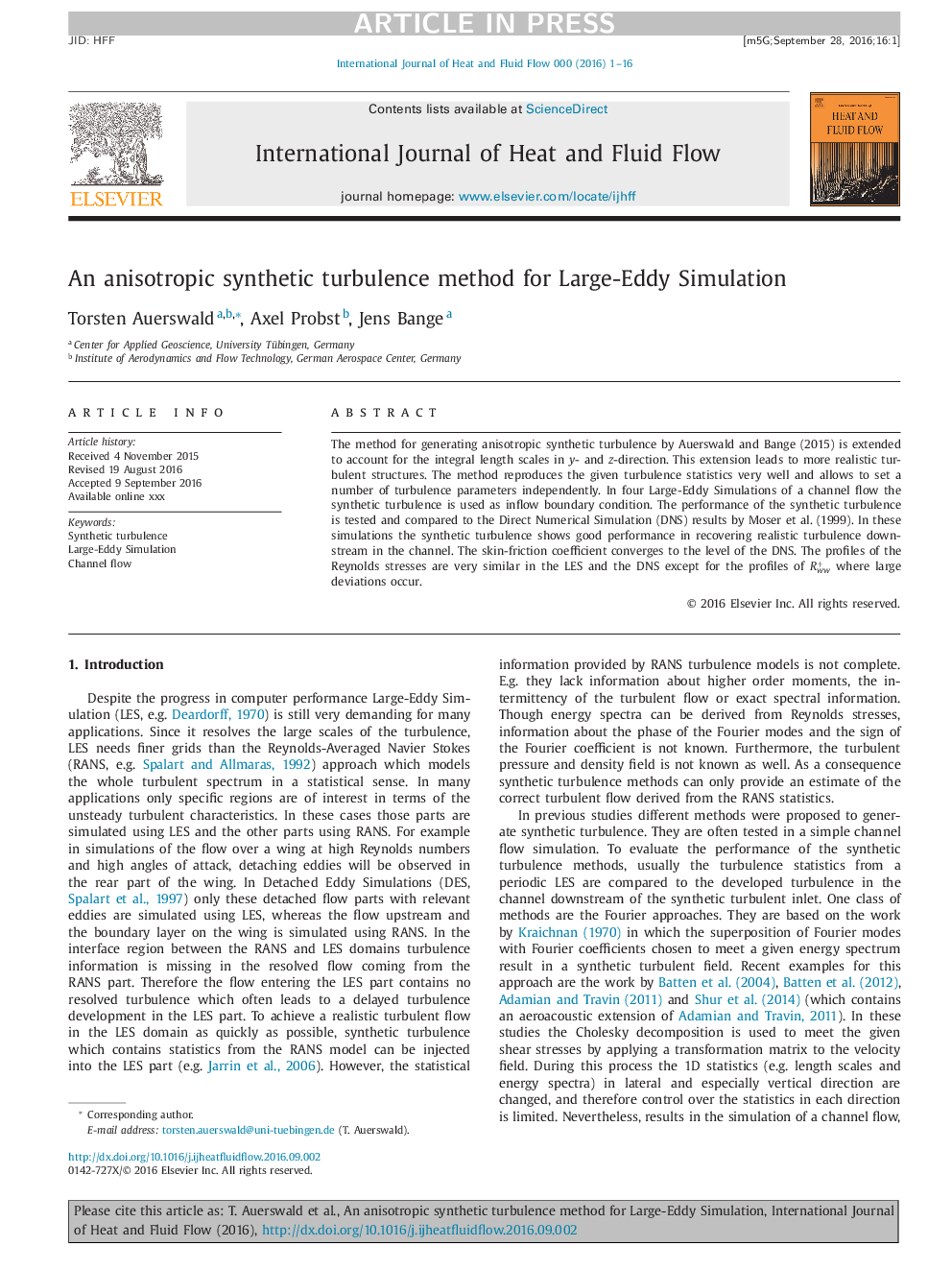| Article ID | Journal | Published Year | Pages | File Type |
|---|---|---|---|---|
| 4993244 | International Journal of Heat and Fluid Flow | 2016 | 16 Pages |
Abstract
The method for generating anisotropic synthetic turbulence by Auerswald and Bange (2015) is extended to account for the integral length scales in y- and z-direction. This extension leads to more realistic turbulent structures. The method reproduces the given turbulence statistics very well and allows to set a number of turbulence parameters independently. In four Large-Eddy Simulations of a channel flow the synthetic turbulence is used as inflow boundary condition. The performance of the synthetic turbulence is tested and compared to the Direct Numerical Simulation (DNS) results by Moser et al. (1999). In these simulations the synthetic turbulence shows good performance in recovering realistic turbulence downstream in the channel. The skin-friction coefficient converges to the level of the DNS. The profiles of the Reynolds stresses are very similar in the LES and the DNS except for the profiles of Rww+ where large deviations occur.
Related Topics
Physical Sciences and Engineering
Chemical Engineering
Fluid Flow and Transfer Processes
Authors
Torsten Auerswald, Axel Probst, Jens Bange,
